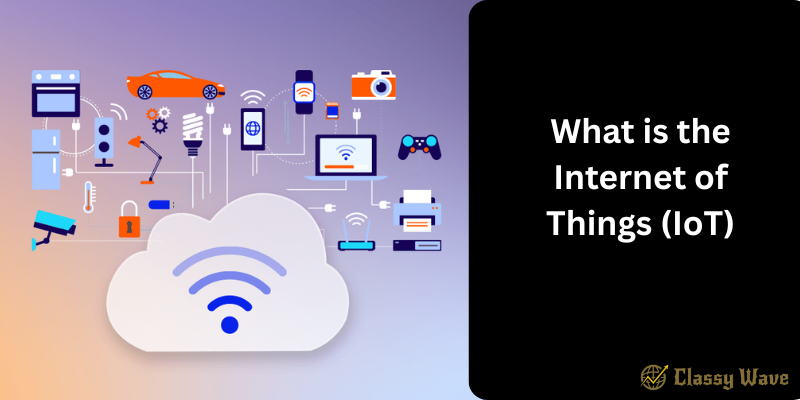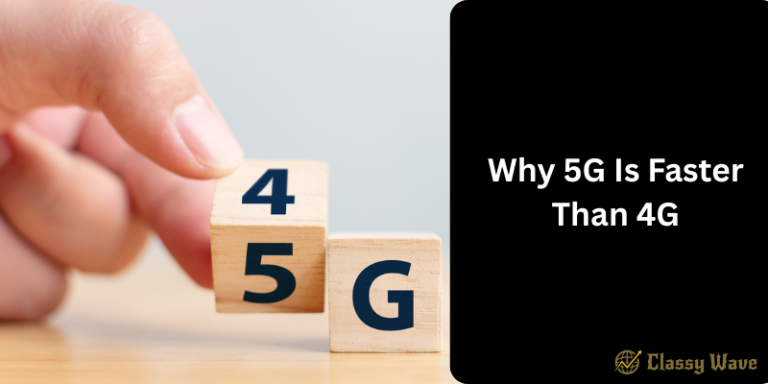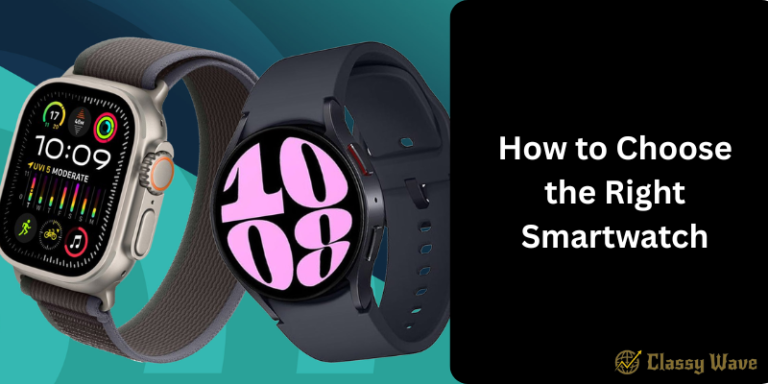What is the Internet of Things (IoT) | Classy Wave
Have you ever imagined your refrigerator reminding you to buy milk, or your smartwatch tracking your sleep and sending health updates to your doctor? Welcome to the world of the Internet of Things (IoT) — a technology that connects everyday objects to the internet, allowing them to collect, share, and act on data. IoT has become a key part of our daily lives, transforming how we live, work, and interact with technology.
Understanding the Concept of IoT
The Internet of Things (IoT) refers to a network of physical devices — from home appliances and cars to industrial machines — that are connected to the internet and communicate with each other. These devices use sensors, software, and other technologies to collect and exchange data without human involvement.
Simply put, IoT enables “things” to talk to each other. For example, your smart thermostat adjusts the temperature based on your habits, or your fitness tracker syncs your workout data with your phone automatically.
How Does IoT Work?
IoT works through a combination of sensors, connectivity, data processing, and user interfaces.
- Sensors and Devices: These collect data from their surroundings (e.g., temperature, motion, sound).
- Connectivity: Data is sent through Wi-Fi, Bluetooth, 4G/5G, or other networks.
- Data Processing: The data is analyzed in the cloud or locally on the device.
- User Interface: The information is displayed to users through an app, dashboard, or alert.
For example, a smart home camera detects movement (sensor), sends an alert (connectivity), processes video data (data processing), and notifies you via a mobile app (user interface).
Real-Life Examples of IoT
IoT is everywhere — often in places you might not even notice. Here are some common examples:
- Smart Homes: Devices like Alexa, Google Nest, and smart lights can be controlled remotely.
- Wearable Devices: Smartwatches, fitness bands, and medical wearables track health data.
- Connected Cars: Vehicles equipped with IoT systems can provide navigation, maintenance alerts, and driver safety features.
- Smart Cities: Traffic lights, waste management, and surveillance systems use IoT for efficiency.
- Industrial IoT (IIoT): Factories use sensors to monitor equipment and improve productivity.
Benefits of the Internet of Things
IoT offers countless advantages for both individuals and businesses. Some of the most important benefits include:
1. Convenience
IoT automates everyday tasks. You can control lighting, temperature, and even security systems from your smartphone.
2. Efficiency
By collecting real-time data, IoT helps optimize energy usage and streamline operations in homes, offices, and industries.
3. Cost Savings
Businesses can predict maintenance needs, reducing downtime and repair costs.
4. Enhanced Safety
IoT devices like smoke detectors, home cameras, and vehicle sensors increase security and safety.
5. Better Decision-Making
With accurate, real-time insights, IoT empowers smarter and faster business decisions.
The Role of IoT in Everyday Life
IoT has quietly integrated into almost every aspect of daily living. Smart home assistants like Amazon Alexa help you play music or set reminders with voice commands. Fitness trackers monitor your heart rate and sleep cycles. Even agriculture has adopted IoT — farmers use soil sensors to determine when to water crops, improving yields and saving resources.
IoT in Business and Industry
In the business world, IoT is a game-changer.
- Manufacturing: Machines equipped with sensors can detect faults before they happen.
- Healthcare: IoT devices help monitor patients remotely, providing real-time updates to doctors.
- Retail: Smart shelves and inventory systems keep track of stock automatically.
- Transportation: GPS and IoT sensors enable fleet tracking and route optimization.
These applications increase productivity, safety, and efficiency across industries.
Security and Privacy Challenges
Despite its benefits, IoT comes with challenges — especially around security and privacy.
Because IoT devices constantly exchange data, they can become targets for hackers if not protected properly. Weak passwords, outdated software, or unsecured networks can lead to breaches.
To stay safe:
- Use strong passwords for all connected devices.
- Regularly update firmware.
- Connect devices only to secure networks.
The Future of IoT
The future of IoT looks incredibly promising. With advancements in 5G, Artificial Intelligence (AI), and edge computing, IoT will become even faster, smarter, and more efficient. Imagine self-driving cars communicating with traffic systems or smart cities adjusting energy consumption in real-time — that’s where we’re heading.
Experts predict that by 2030, there will be over 25 billion IoT-connected devices worldwide. As technology evolves, IoT will continue shaping industries, cities, and daily life.
Advantages and Disadvantages of IoT
Advantages
- Improves efficiency and automation
- Reduces human effort and error
- Provides real-time data and insights
- Enhances convenience and comfort
Disadvantages
- Security vulnerabilities
- Privacy concerns
- Dependence on internet connectivity
- High setup and maintenance costs
How IoT Is Transforming the World
From smart homes to smart cities, IoT is revolutionizing the way we live and work. It’s creating a more connected, intelligent world — one where devices not only respond to our commands but also anticipate our needs. This seamless integration between humans and technology marks a major step toward a fully digital future.
Conclusion
The Internet of Things (IoT) is more than just a tech trend — it’s a global movement toward smarter, more connected living. By linking devices, data, and people, IoT simplifies everyday life, enhances business operations, and opens doors to innovation. However, as IoT grows, so does the responsibility to use it safely and ethically. The future is connected — and IoT is leading the way.







